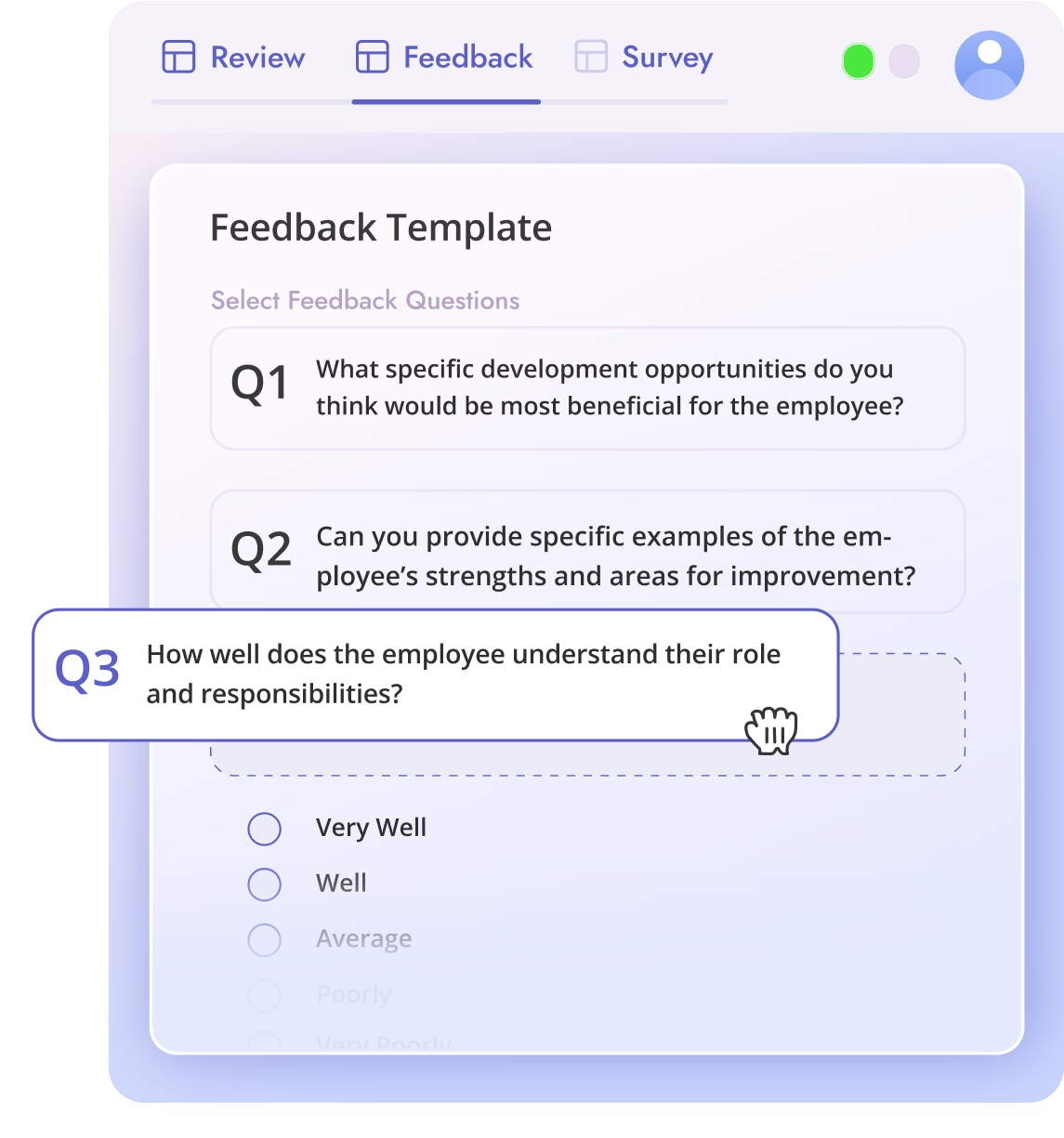This Behavioral Feedback Template helps managers and peers give structured, respectful feedback on how an employee’s behavior impacts their team, projects, and overall work environment. It supports professional growth by encouraging clear communication and a shared understanding of expectations, especially in areas like collaboration, conflict resolution, and stress management.
Delivered through Teamflect in Microsoft Teams and Outlook, it ensures feedback is timely and promoting development-focused conversations that remain objective and growth-oriented.
.avif)
Impact-Based Reflection
Encourage thoughtful input on how an employee’s behavior influences team dynamics and workplace culture both positively and constructively.
Improvement Suggestions
Provide space for respectful advice to support growth in areas like communication, professionalism, and behavioral consistency.
Communication & Conflict Ratings
Multiple-choice questions assess how well employees interact with others and navigate challenging interpersonal situations.
Stress Management & Professionalism Ratings
5-star rating scales provide a snapshot of the employee’s self-regulation, maturity, and composure under pressure.
Balanced Feedback Approach
Encourages both positive reinforcement and areas for improvement to support developmental conversations.
Autosave & Confidentiality Options
Responses are saved automatically and visibility is flexible; submit anonymously, share only with a manager, or choose to include the employee for transparent follow-up.
1. Use after incidents, 1-on-1s, or during review cycles
This template can be used reactively (to address concerns) or proactively (to recognize improvement or provide growth-focused input).
2. Customize tone or add examples based on your feedback culture
Whether your style leans toward radical candor or appreciative inquiry, tailor the open prompts to reflect that tone.
3. Submit feedback in seconds
Everything happens inside Teamflect so feedback becomes a natural extension of daily collaboration in Microsoft Teams.
4. Integrate into development conversations
Incorporate feedback into formal performance reviews, coaching sessions, or improvement plans where needed.
Best for:
With the Behavioral Feedback Template, it is easy to have important conversations that are professional, constructive, and consistent.
Positive feedback examples to reinforce great behavior
How to build a strong feedback culture in your team

The purpose of behavioral feedback is to provide information to individuals about how their behavior is perceived by others and to help them understand the impact of their behavior on the work environment.
The frequency at which feedback should be given can vary depending on the individual and the context. Some organizations may give feedback on a regular basis, such as during performance reviews, while others may give feedback as needed.
Behavioral feedback can contribute to the company by improving communication, increasing productivity, and promoting a positive work culture.
Behavioral feedback typically covers topics such as communication skills, teamwork, leadership, problem-solving, and meeting expectations. It can also focus on specific behaviors, such as time management, attitude, and attendance.
Behavioral feedback refers to information provided to individuals about their behavior, actions, or performance in a specific context. It aims to highlight specific behaviors, whether positive or negative, in order to promote self-awareness, improvement, and development.
Behavioral feedback for employees is given by clearly describing the specific behavior observed, explaining the impact or consequences of that behavior, and offering suggestions for improvement.
The behavioral outcomes of feedback can vary depending on how it is delivered and received. Positive feedback on desired behaviors can reinforce and strengthen those behaviors, leading to increased motivation, engagement, and performance. On the other hand, feedback on areas requiring improvement can raise awareness, guide behavior change, and ultimately enhance individual growth and development.